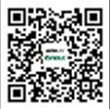Internet-of-Things
Today, the list of devices that are connected to the internet is endless, as is the number of tasks that they help us to accomplish. For example, they can detect leaks, keep track of assets, make buildings more energy efficient and so much more besides (mainly through the use of battery-powered sensors). With the number of internet-of-things (IoT) devices growing at an ever-increasing rate, it would be impractical to power them all using mains electricity, so many rely on battery power.
Another common trend is to make these devices smaller and lighter, so that they can be easily transported and do not take up much space in the home, warehouse, hospital or other environment. Therefore, many manufacturers opt to use non-rechargeable cells due to their high energy density. There are a number of non-rechargeable cells to choose from, each with different performance requirements to suit the equally diverse range of power demands. For example, devices used in the home often require a consumer-replaceable battery, so Lithium Manganese Dioxide chemistry is ideal (such as a Ultralife China's CR123A cells or Thin Cells®). Whereas industrial devices may require higher voltage and energy density, so technician-replaceable Lithium Thionyl Chloride chemistry may be the best option (such as Ultralife China's ER Generation X cells).
Speaking to an experienced battery manufacturer, like Ultralife China (ABLE), can ensure that you select the right battery or cell for your needs.
What can Ultralife China (ABLE) offer?
Experts in manufacturing non-rechargeable batteries and cells for internet-of-things devices; ABLE offers products to suit a wide-range of original equipment manufacturer (OEM) requirements.
For consumer or many industrial applications, these include Lithium Manganese Dioxide CR123A, Thin Cells® and the world's longest lasting Lithium 9 Volt. Due to advances in technology, many devices (such as gas leak sensors and illumination equipment) can now run on 3 volts, making CR123A cells well-suited, especially due to their steady voltage curve that allows for high power for the whole battery life. Where available space for a battery is limited (such as in asset tracking tags), Thin Cells® measure as thin as 1.1mm.
For outdoor or extreme temperature industrial use, Lithium Thionyl Chloride ER Generation X cells offer a wide operating temperature range from -55°C to +85°C. These cells are also ideal for remote environments, thanks to a low self-discharge rate (less than 2% self-discharge per year) and up to 30% more capacity performance (average across temperatures versus competition).
Why choose us?
Ø Benefit from Ultralife's 30 years' experience in non-rechargeable cell and battery manufacturing (almost 20 years' for ABLE)
Ø Cells and batteries made from a wide range of chemistries, including Lithium Manganese Dioxide and Lithium Thionyl Chloride
Ø Worldwide engineering and technical support available (Ultralife has manufacturing facilities in the United States, United Kingdom and China)
Ø Continuous research and development (keeping at the forefront of battery technology)
To make an inquiry, please




